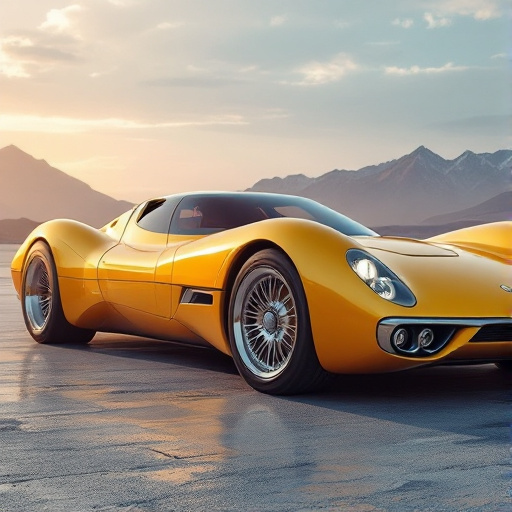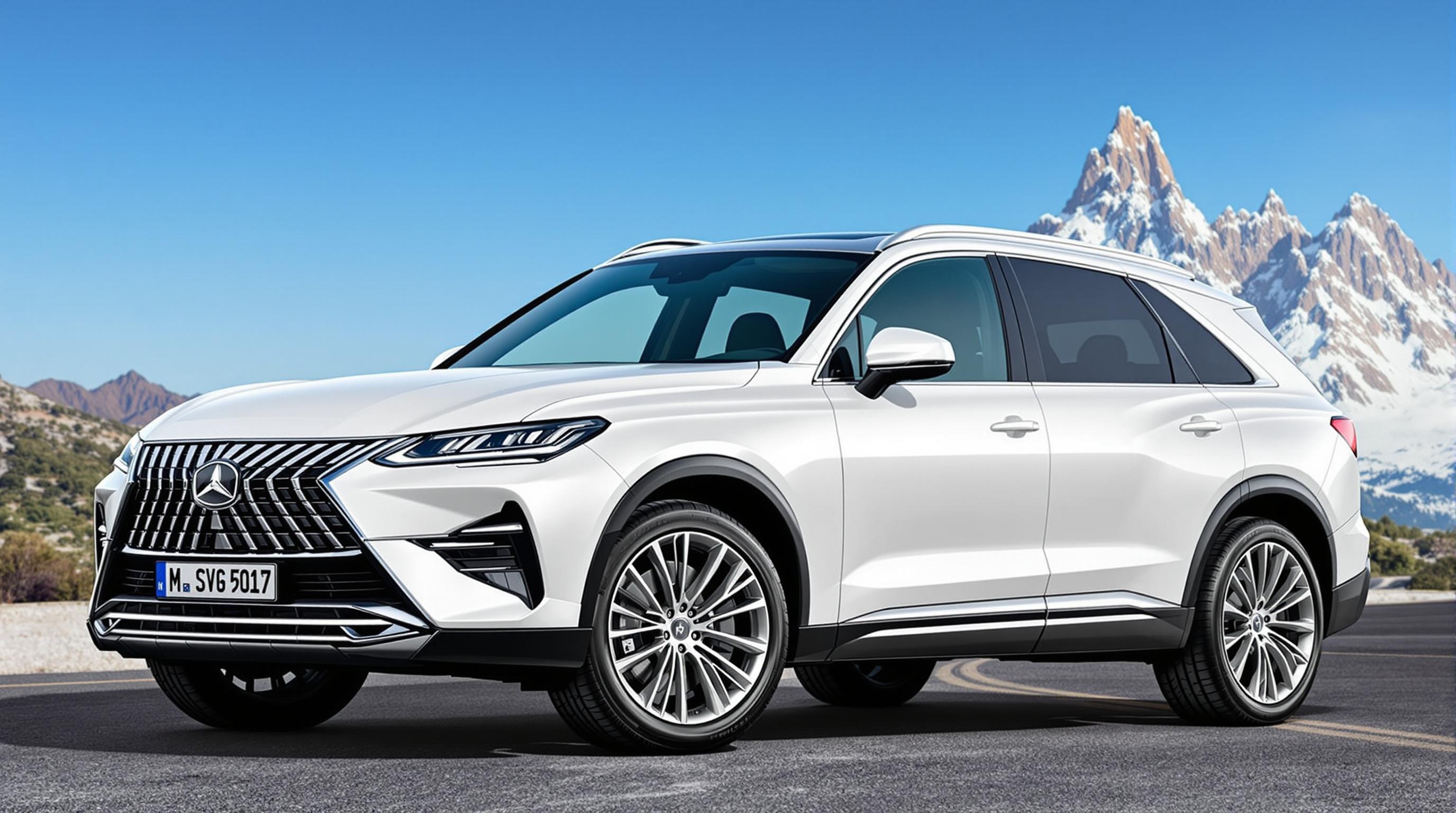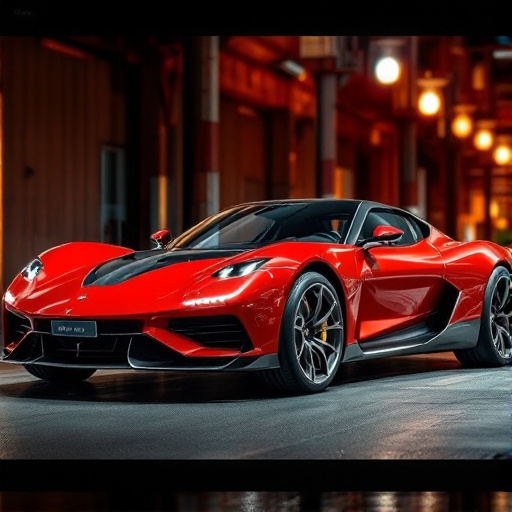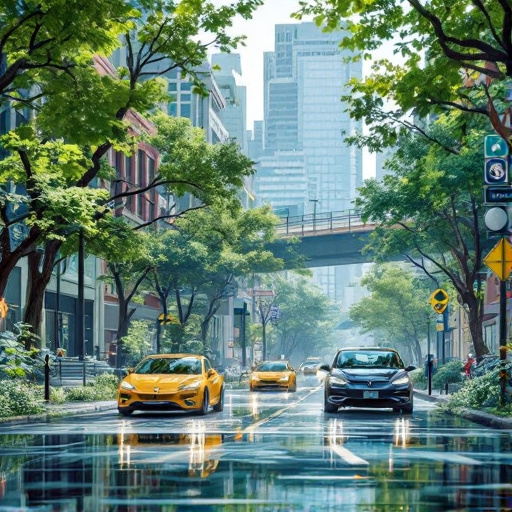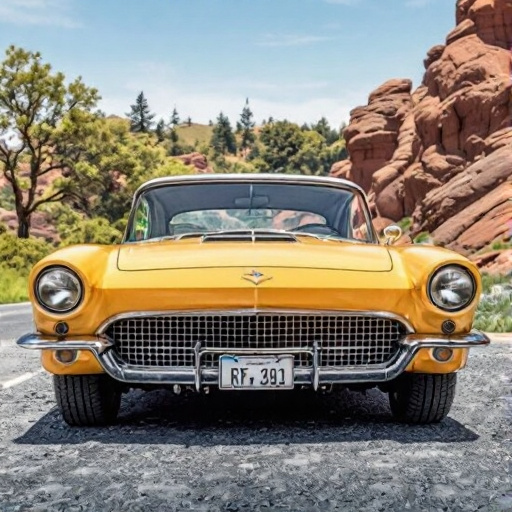Related Articles
- Charged Up! How Electric Vehicles are Reshaping Urban Wildlife Habitats and Biodiversity
- Navigating the Used Car Market: Uncovering the Secrets of 'As-Is' Sales for Savvy Buyers
- The Rise of Electric Car Pop-up Shops: A New Frontier for Urban Retail Experiences
- The Forgotten Art of DIY Car Maintenance: Rediscovering Skills in a Tech-Driven World
- Electric vs. Vintage: The Battle for Enthusiasts' Hearts in the Age of Latest Car Models
- The Rise of the 'Car Review Influencer': How Social Media is Shaping Auto Buying Decisions
"The Rise of Retro Futurism: How Classic Designs are Shaping Today's Latest Car Models"
"The Rise of Retro Futurism: How Classic Designs are Shaping Today's Latest Car Models"
The resurgence of retro futurism has dramatically influenced modern automotive design, blending nostalgic elements with cutting-edge technology to captivate today's consumers. In this article, we'll explore how classic designs not only evoke fond memories but also drive innovation and sustainability in the automotive industry.
The Allure of Nostalgia in Car Design
Nostalgia has a powerful grip on consumers. Unlike a fleeting trend, the emotional pull of retro designs, particularly in the automotive world, has proven to be a catalyst for brands looking to entice younger audiences while retaining their established fan base. According to a 2022 survey by the Automotive News, 73% of consumers expressed a preference for vehicles that evoke nostalgia, indicating a yearning for a simpler, more stylish era.
Understanding Retro Futurism
What exactly is retro futurism? This design ethos marries the aesthetics of the past with an imaginative vision of the future. Picture the streamlined shapes of mid-20th century vehicles that suggested speed and sophistication, combined with modern technology and eco-friendly enhancements. Cars like the Tesla Cybertruck incorporate sharp lines and unique profiles reminiscent of 1950s sci-fi visions. Such convergence keeps car buyers excited and engaged.
Case Study: The Volkswagen ID. Buzz
Consider the Volkswagen ID. Buzz, which evokes the beloved VW Microbus of the 1960s. This modern electric vehicle takes everything that was cherished about the original—its spaciousness, versatility, and charm—and revamps it with a sustainable electric platform. Featuring a funky design that transports you back to an era of peace, love, and turtlenecks, the ID. Buzz shows that retro futurism is not just a gimmick but a strategic move by manufacturers to recapture the spirit of their most iconic models.
The Power of Color and Shape
Color and shape have always played vital roles in car design. The rise of retro futurism has revived vibrant colors and bold shapes that many consumers believe to be more engaging than sterile, minimalist designs often touted by the tech industry. In 2023, Ford announced that it would be bringing back the beloved "Grabber Blue" color option for its Mustang line, based on consumer feedback longing for a return to expressive hues. This was among the reasons that Ford saw a remarkable 22% increase in Mustang sales that year.
The Intersection of Sustainability and Innovation
Critics might argue that looking back could stifle innovation. However, retro futurism often inspires sustainable practices. EV manufacturers like Rivian are using creative designs that echo adventurous vehicles of yesteryear while being at the forefront of green technology. As they catch on, these ideas are engaging a generation concerned about climate change without sacrificing style.
Iconic Features Making a Comeback
As trends cycle through the decades, certain design features are making remarkable comebacks—including tail fins, round headlights, and chrome detailing. Take retro-inspired interiors, for example, which amalgamate vintage gauges and buttons with modern touchscreen technology. What once felt outdated can now attract a younger audience eager for authenticity and originality.
Anecdote from the Road
I remember driving a 1972 Chevrolet Corvette Stingray to a local car meet—immediately, heads turned and jaws dropped. The retro designs not only screamed classic but also possessed an allure that contemporary cars often lack. Older car enthusiasts reminisced about their youth while younger fans snapped photos, captivated by the old-school charm. There’s undeniable magic in cars that resonate across generations.
The Cultural Impact of Retro Cars
Retro futurism isn’t limited to car design; it extends into films, music, and fashion, shaping an entire cultural narrative. Films like "La La Land" and recent adaptations of classics have propelled retro aesthetics into the mainstream, influencing how car manufacturers approach design. They often look to capture the zeitgeist of modern culture while playing homage to their rich legacies.
Statistics That Speak Volumes
Statistics further reveal the impact of retro design on consumer behavior. According to a 2021 report by Deloitte, 60% of millennials and Generation Z find retro styles appealing, particularly in automotive design. This demographic values experiences over possessions, and cars that offer a blend of nostalgia and modern convenience become the perfect intersection.
Retro Futurism in Electric Vehicles
As the electric vehicle market continues its meteoric rise, the influence of retro futurism is evident. The Polestar 2, designed with inspiration drawn from the Volvo P1800, showcases a minimalist yet striking design that reflects the retro-futuristic ethos. The marriage of stunning aesthetics with sustainable technology has made it a hallmark for aspiring electric car models.
The Risks vs. Rewards of Nostalgia in Design
In terms of marketing, the risks associated with embracing retro aesthetics must be addressed. While nostalgia can encourage a connection with potential buyers, it also runs the risk of alienating those who prefer contemporary designs. Despite this, the rewards often outweigh the risks, particularly when executed correctly, as illustrated by the increased sales and positive reception of vehicles like the Ford Bronco and Mini Cooper.
Conclusion: A Bright Future with Retro Influences
In conclusion, retro futurism acts as a bridge between the past and the future, creating a soothing yet captivating design philosophy that resonates deeply with consumers of all ages. As this trend continues to expand, we can expect to see an even greater influence on tomorrow's automobile designs, proving that classic elements will forever shape our modern world.
As a car enthusiast of 28, I can confidently say that embracing retro design can make the driving experience feel more personal and adventurous. The blend of classic aesthetics with modern technology captures the imagination, breaking the monotony of conventional styles. As we steer into this new era of automotive design, the road ahead promises to be an exciting journey punctuated by a beautiful balance of nostalgia and innovation.
